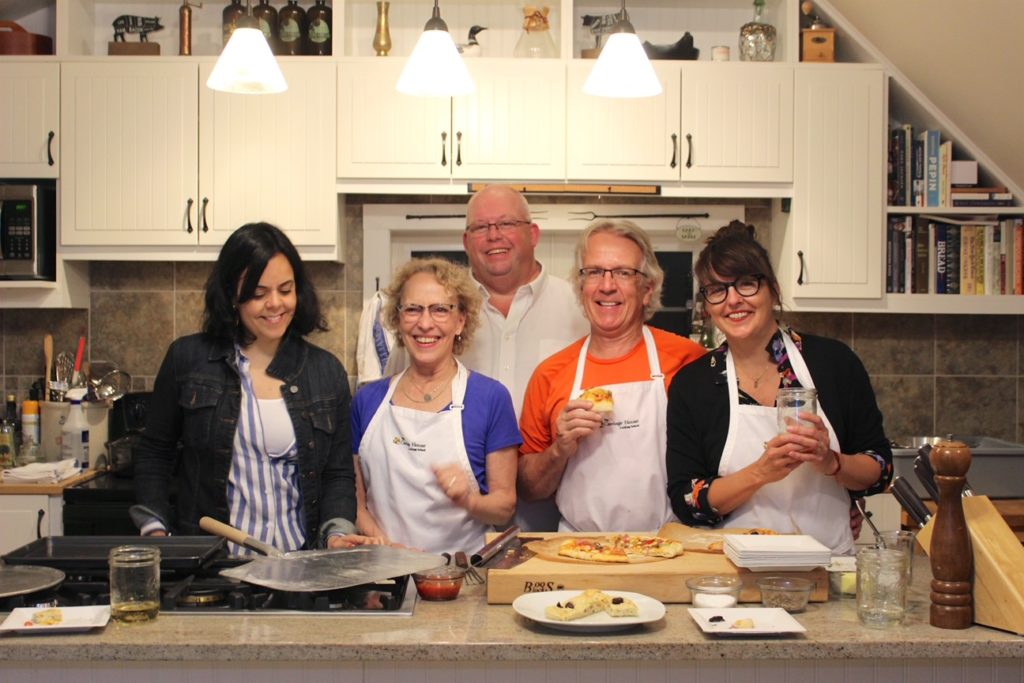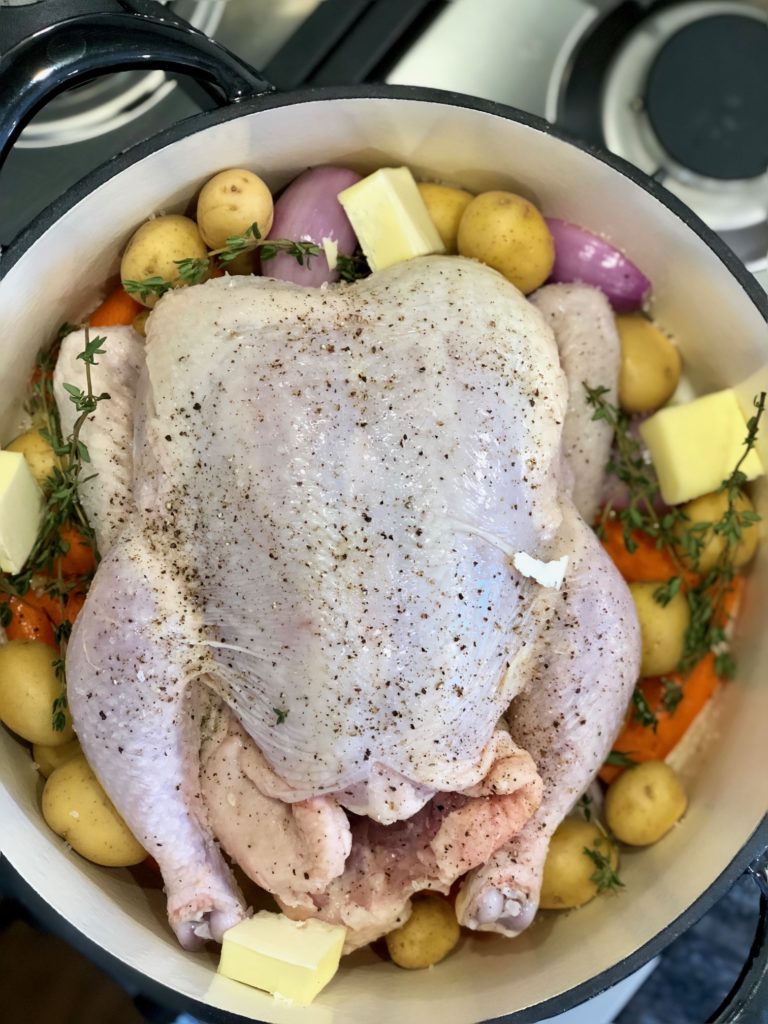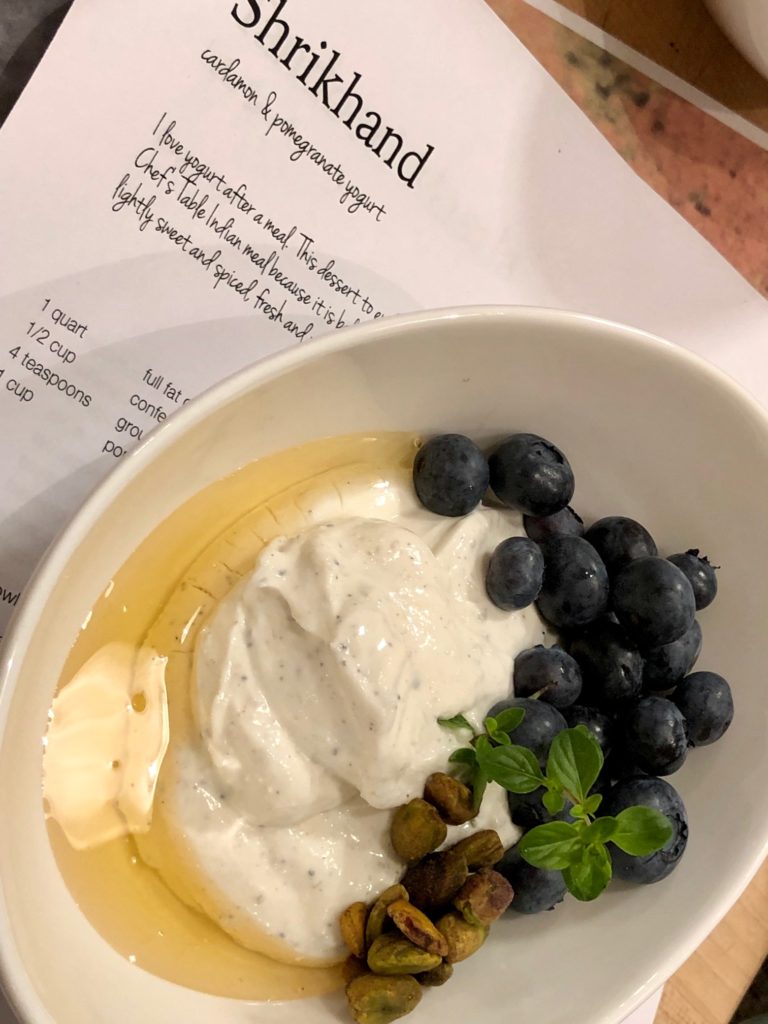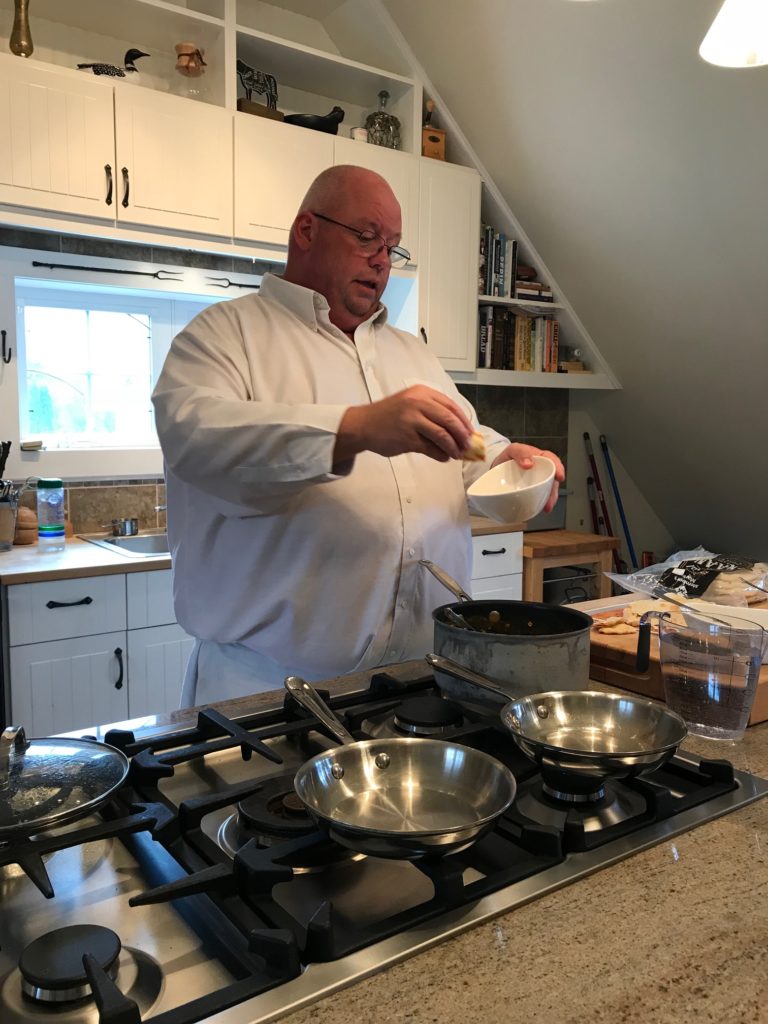By Tim Rowland

Curtiss Hemm thinks about food in ways that others don’t. Along with being a chef, he is a food instructor, food economist and food anthropologist. The Rumplestiltsken of chicken, he can spin a single bird into $188 worth of saleable restaurant product, massaging the parts many of us would throw away into pates, consommés and brodos.

At his Carriage House Cooking School in Peru, Hemm teaches his craft to small, intimate gatherings, relying as much as possible on ingredients from local farms. His clientele is well-heeled with the twin luxuries of money and, maybe even more important, time to dabble in the culinary arts.
But for all the stereotypical barbs about the wealthy lacking the skills needed to microwave their own soup, food pantries and farm stores have noticed that those on the opposite end of the economic scale are frequently clueless about food preparation as well.
In 2018, AdkAction and the Keeseville Farmacy, with a grant from the Adirondack Foundation, brought in Hemm to see if some of the methods from his cooking school and economics of his restaurant years might apply to disadvantaged people and match them up with healthy, locally grown foods.
Re-enter the $188 chicken.
“At the grocery store you can buy a 3-pound chicken that has been raised in absolutely horrible conditions,” Hemm said. “Or you can buy a local chicken for $25 — but now you’ve got sticker shock, and I agree, $25 is a lot for a chicken. But in my mind, as a chef, I’m looking at edible portions.”
To begin with, as a chicken grows, its bones grow first. So that three-pound fryer is going to contain disproportionately less meat than a six-pound pasture raised bird. So the breast, roasted with potatoes and carrots will feed a family of four.
The wings themselves can make a quart of broth — and chicken soup. Chop the meat of the drumsticks with half a head of cabbage, garlic, scallions and soy sauce and you have a dumpling mix. With water and 12 cents worth of flour, you can make the dough for 16 potstickers. The other half of the cabbage goes for salad with another meal.
The thighs can be used in a stir fry, and the carcass makes a broth that can be combined with a pasta that mimics risotto. “Anything that can be turned into a liquid is gold,” Hemm said.
Suddenly that $25 chicken has morphed into 14 portions costing $1.79 cents each — less than a burger at McDonald’s. “And it gives the producer the cost needed to raise that bird,” Hemm said. Everyone wins.
Even so, Hemm knows it’s not an easy message to get across. And people can’t always cook, even if they have been taught how. “The cheapest calories are the worst calories,” he said. “There are high quality foods at very affordable prices if you know how to use them, but when you’re poor the last thing you focus on is nutrition. If you have time, that’s time you could be working to make some money.”

Ironically, even finding the time to take a money-saving cooking class is an issue. As a food anthropologist, Hemm recognizes the downward spiral which began when it became necessary for families to have two incomes and people of all social strata basically forgot how to cook. For single parents, the problems are compounded. Hemm instructed one woman whose poverty was so severe that she was never sure where she and her children would be staying from one month to the next. “There wasn’t a pantry she could use for her own larder,” he said.
Reestablishing what Hemm calls culinary literacy is a difficult ship to turn, but Hemm says it is essential, both for consumers and producers. And it is not just the lower rung of the social strata that needs to be addressed. With Covid, “A lot of people are going to food pantries who never thought they would be going to food pantries,” he said.
It is, Hemm said, further indication of the need for food literacy at all levels of American society. It is a variation on the old “teach a man to fish” saw, tempered with economics that will be durable both for the people who eat, and grow, the food.
“You can hand out gift cards all you want,” Hemm said. “But if you don’t tell people how to cook it won’t stick.”

About the author: Tim Rowland is a freelance writer raising belted Galloway beef cattle in Jay, New York.
Learn more about Carriage House Cooking School and ways to follow Curtiss on social media by checking out his Adirondack Harvest profile.
